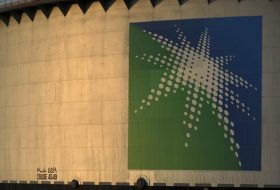Chevron Starts Up Gorgon Extension Project
The second stage of the Gorgon field project offshore Western Australia has begun producing gas, operator Chevron Australia said.
Eleven wells have been added to the Gorgon and Jansz-Io fields and offshore pipeline and undersea structures were put up to serve gas processing facilities on Barrow Island, the Australian unit of Chevron Corp. said in a press release Tuesday.
Chevron Corp. calls the Gorgon undertaking “one of the world’s largest LNG projects and the largest single resource project in Australia’s history”, as described on the global energy giant’s website. Projected to last over 30 years, the project linked with three trains includes a plant that can produce up to 15.6 million tons of liquefied natural gas yearly, as well as another gas facility meant to supply Western Australia with a daily capacity of 300 terajoules. The project, which exports to Asia-Pacific, dispatched its first LNG cargo March 2016 and began supplying the local market December that year.
“The development supports the longevity of the Gorgon Project and the continuation of its already significant ongoing benefits including highly skilled local employment, economic activity as well as state and federal government revenue for decades to come”, Chevron Australia managing director Mark Hatfield said in the announcement.
“Adding to the initial A$40 billion [$27 billion] spend on Australian goods and services from the Gorgon Project since 2009, the development created more than 800 jobs in Western Australia through drilling and completion activities, subsea infrastructure installation and project management”.
Chevron Australia operates the Gorgon project with a 47.3 percent stake. Exxon Mobil Corp. holds 25 percent, Shell PLC 25 percent, Osaka Gas Network Co. Ltd. 1.25 percent, Tokyo Gas Co. Ltd. one percent and JERA Co. Inc. 0.417 percent.
Western Australia remained the country’s top natural gas producer in 2020-21 accounting for 3,459 petajoules (PJ) of the 5,730 PJ national output, according to the latest official data. That was despite the Gorgon and Prelude floating LNG facilities, both in the state, being intermittently switched off by technical problems and routine maintenance, the “Australian Energy Update 2022” of the Climate Change, Energy, Environment and Water Department said.
Western Australia consumed 1,246.5 PJ of energy in 2020-21, or 21.5 percent of the national total of 5,789.6 PJ.







